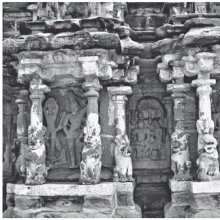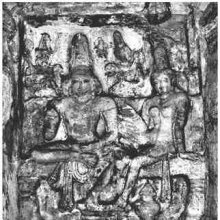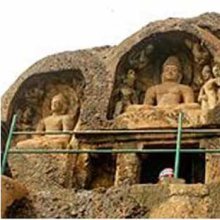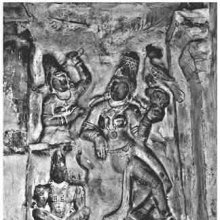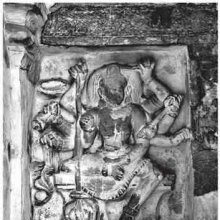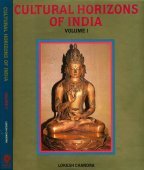Neech: 2 definitions
Introduction:
Neech means something in Hindi. If you want to know the exact meaning, history, etymology or English translation of this term then check out the descriptions on this page. Add your comment or reference to a book if you want to contribute to this summary article.
Ambiguity: Although Neech has separate glossary definitions below, it also represents an alternative spelling of the word Nica.
Images (photo gallery)
(+18 more images available)
Languages of India and abroad
Hindi dictionary
Source: DDSA: A practical Hindi-English dictionaryNeech in Hindi refers in English to:—(a) mean, base, vile; inferior; low, lowly; -[umca] low or/and high, good or/and bad, proper or/and improper; —[kamai] ill-earned money; immoral profession; —[kula] low family, low clan; •[ka] low-born; —[jati] low caste; ~[pana/~pana] see [nicata]..—neech (नीच) is alternatively transliterated as Nīca.
...
Nepali dictionary
Source: unoes: Nepali-English DictionaryNeech is another spelling for नीच [nīca].—n. a mean or base person; adj. 1. low; 2. base; mean; inferior; worthless; 3. dwarfish;
Nepali is the primary language of the Nepalese people counting almost 20 million native speakers. The country of Nepal is situated in the Himalaya mountain range to the north of India.
See also (Relevant definitions)
Starts with: Niccakkuttai, Niccal, Niccan, Niccati, Niccattanni, Niccukkaran, Niccuppiramekam, Niccuttannir.
Full-text: Koshta, Shri-malika, Harihara, Caturbhuja, Candrashekhara, Nica, Nandimandapa, Bhitti, Vishnu, Prasada.
Relevant text
Search found 31 books and stories containing Neech, Nich; (plurals include: Neeches, Niches). You can also click to the full overview containing English textual excerpts. Below are direct links for the most relevant articles:
Kena Upanishad with Shankara’s Commentary (by S. Sitarama Sastri)
Verse 29 < [Part Four]
Manusmriti with the Commentary of Medhatithi (by Ganganatha Jha)
Verse 3.71 < [Section VII - Duties of the Householder]
Jainism in Odisha (Orissa) (by Ashis Ranjan Sahoo)
Jaina Antiquities at Bada Charampoi (Jajpur) < [Chapter 3: Survey of Jaina Antiquities in Odisha]
Jaina Antiquities in Manikchauk (Balasore) < [Chapter 3: Survey of Jaina Antiquities in Odisha]
Jaina Antiquities at Khandagiri Hills (Khordha) < [Chapter 3: Survey of Jaina Antiquities in Odisha]
Jain Remains of Ancient Bengal (by Shubha Majumder)
Jain Caumukha/Caumukhi or Caturmukhas < [Chapter 6 - Iconographic Study of Jaina Sculptural Remains]
Abandoned Temples/Structural Ruins Containing Sculptural Specimens < [Chapter 5 - Jaina Architectural and Sculptural Remains]
Caubisi type of Ṛṣabhanātha sculptures < [Chapter 6 - Iconographic Study of Jaina Sculptural Remains]
Early Chola Temples (by S. R. Balasubrahmanyam)
Temples in Tiruvandarkoyil (Vadugur) < [Chapter II - Temples of Parantaka I’s Time]
Temples in Karuntattangudi (Karandai) < [Chapter VIII - Temples of Uttama Chola’s Time]
Temples in Melpadi < [Chapter IX - Temples of Rajaraja I’s Time]
Stupas in Orissa (Study) (by Meenakshi Chauley)
Major Stupas at Udayagiri < [Chapter 4]
Minor Structural Stupas at Ratnagiri < [Chapter 4]
Minor Structural Stupas at Udayagiri (Southern Zone) < [Chapter 4]
Related products
